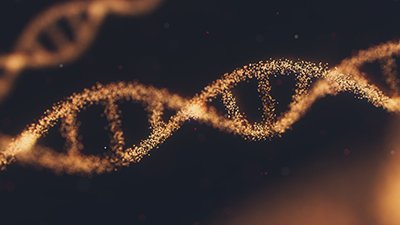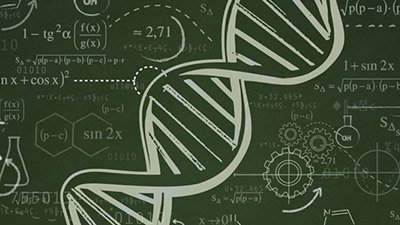
Finding Adam in the Genome: Part 3 of a Response to Chapter 2 of Adam and the Genome
In this series, we have been examining the scientific claims in the book Adam and the Genome.1 In our previous post, we began to evaluate the genetic claims that one of the authors, Dennis Venema, makes in chapter two. Today’s post continues this discussion.
At the beginning of chapter two, Venema begins an extended analogy between language and genetics. His purpose is to show that evolutionary change bears strong resemblance to language change. Since few people would have a problem with the latter, Venema builds on this foundation to argue for the former.
Specifically, Venema thinks that we can trace common ancestry among species in the same way that we can trace common ancestry among languages. In other words, Venema thinks that the pattern of genetic differences is strong evidence in support of evolution.
In our previous post, we examined the first of several patterns that Venema cited. Venema claimed that the chemical “spellings” of various genetic “words”—genes—fit the hypothesis of evolutionary common ancestry, and that these spellings simultaneously rejected the hypothesis of design. We discovered that this claim was a hypothesis that he prematurely stated as fact. We also found that the trajectory of experimental results to date casts doubt on the veracity of Venema’s hypothesis. In short, the variant spellings of particular genes in various species appear to be much more functional than Venema anticipated.
Humans versus Chimpanzees
Not surprisingly, the next type of genetic pattern that Venema cites in chapter two attacks the concept of function head-on. However, before he can get to specific examples of genetic non-function, Venema tries to apply the principles of functional redundancy to human-chimpanzee genetic comparisons.
For example, Venema claims that the published, comprehensive genetic comparisons between humans and chimpanzees reveal a genetic identity of 95–98%. He claims, “No matter how you slice it, the human and chimpanzee genomes are nearly identical to one another.”
He then makes an even stronger claim:
Humans and chimpanzees not only have nearly identical genomes, but . . . our genomes are organized in the same spatial pattern. At the sentence, paragraph, and chapter level, our two “books” are organized in the same way. As before, there is no biological reason why this needs to be the case. We, or chimpanzees, would be fine with our genes in very different spatial arrangements.2
What should we make of these bold assertions?
Based on our discussion in the previous post, we would be justified in suspecting that Venema is once again prematurely stating hypothesis as fact. Consistent with this suspicion, Venema cites no scientific paper to justify his claim about the biological function (or lack thereof) in the spatial patterns of human and chimpanzee DNA.
We would be justified in suspecting that Venema is once again prematurely stating hypothesis as fact.
Conversely, a recent flurry of experiments has just begun to test Venema’s claim. The results have set a trajectory that is very unfavorable to his assertions. In fact, this trajectory is so strong that it would be irresponsible to try to list every paper that has begun to show the functional importance of DNA spatial organization. To explore the evidence, all you have to do is visit one of the web-based search engines for peer-reviewed scientific papers.
For example, if you visit the webpage for the US National Library of Medicine (https://www.ncbi.nlm.nih.gov/pubmed) and type in “chromatin organization” (i.e., the technical term for genetic spatial patterns), you’ll return nearly 2,000 hits. Even if you limit your search just to review papers, the search will return over 460 papers. The field of chromatin organization is one of the hottest areas of research at present.
Venema has not done his homework on spatial organization.
How Identical?
What about his claim that human and chimpanzee DNA is 95–98% identical, “no matter how you slice it”? Venema actually cites a peer-reviewed paper from 2005 to support this assertion. Let’s take a closer look at the claims in the paper.
By way of background, the human DNA sequence was published in 2001. The publication of the chimpanzee DNA sequence followed in 2005. Venema cites this latter paper as justification of his claim that human and chimpanzee DNA is 95–98% identical.
But Venema leaves out the fact that significant amounts of DNA were excluded from the authors’ analyses. For example, in Table S8 of the same paper,3 the authors report that around 6% of the human DNA sequence found no match to chimpanzee DNA. In other words, because 6% of human DNA found no match to chimpanzee DNA, on the basis of this method alone the DNA sequences from the two species differ by at least 6%.
Venema acknowledges a difference of 5%. But this number does not stem from the parts of human DNA that find no match to chimpanzee. Rather, this number is derived from the parts of human DNA that do actually find some sort of match. This match is not a perfect match—hence, the 5% difference. In other words, Venema’s “5% difference” is better stated as “5% different in the 94% of the DNA that can actually be compared.” If you add the 6% difference (i.e., the percentage of DNA that finds no match) to the 5% difference (i.e., the percentage from the DNA that finds some sort of match, albeit imperfect), you arrive at a total of 11% genetic difference between humans and chimpanzees.
At this stage, you might think, “5% or 11%—does it really matter which number is correct?” Before settling on an answer, consider the total number of chemical “letters” (in technical terms, DNA base pairs) in the human DNA: over 3 billion. Consequently, an 11% difference means that the human and chimpanzee genetic “books” differ by over 330 million letters.
If we treat each DNA letter as equivalent to a character on a printed page, this number takes on even more significance. Let’s say that, on average, a word contains five characters. And let’s also say that the average single-spaced printed page contains 500 words—or 2,500 characters. If the average book is 250 single-spaced pages, then about 625,000 characters constitute a book. Since 330 million letters (i.e., characters) separate humans and chimpanzees, these two species differ by the equivalent of over 500 printed books.
Hundreds of millions of human DNA letters were excluded from the DNA comparisons to either of these species.
This massive gap is not unique to the paper that Venema cites. In 2012, two more great ape DNA sequences were published—from the pygmy chimpanzee (bonobo) and from the western lowland gorilla. These were both compared to the human DNA sequence. Again, hundreds of millions of human DNA letters were excluded from the DNA comparisons to either of these species.4
If this weren’t enough, my creationist colleague Jeff Tomkins has been diligently doing his own reanalysis of the raw genetic data, and he has reached remarkably similar conclusions.5
In light of these facts, how do we explain Venema’s erroneous statements? Not surprisingly, given the fact that theistic evolutionists think that creationists are liars, Venema has been dismissive6 of Tomkins’ results and has failed to follow the steady stream of publications that Tomkins has produced.
But what about Venema’s claims that contradict the results of his own evolutionary colleagues? Do theistic evolutionists carefully read the evolutionary literature?
As we’ll discover in the subsequent posts, this question is not as outlandish as you might think.
Footnotes
- Dennis R. Venema and Scot McKnight. Adam and the Genome: Reading Scripture after Genetic Science. Grand Rapids, MI: Brazos Press, 2017.
- Venema, 32–33.
- Table S8 is freely available via the following link: https://www.nature.com/nature/journal/v437/n7055/extref/nature04072-s2.doc.
- See Table 1 of K. Prüfer, et al., “The Bonobo Genome Compared with the Chimpanzee and Human Genomes,” Nature 486, no. 7404 (2012): 527–31. See also Table ST3.2 of A. Scally, et al., “Insights into Hominid Evolution from the Gorilla Genome Sequence,” Nature 483, no. 7388 (2012): 169–75, doi:10.1038/nature10842.
- See for example, J. P. Tomkins, “Documented Anomaly in Recent Versions of the BLASTN Algorithm and a Complete Reanalysis of Chimpanzee and Human Genome-Wide DNA Similarity Using Nucmer and LASTZ. Answers Research Journal 8 (2015): 379–390, https://answersingenesis.org/genetics/dna-similarities/blastn-algorithm-anomaly/. See also J. P. Tomkins, “Analysis of 101 Chimpanzee Trace Read Data Sets: Assessment of Their Overall Similarity to Human and Possible Contamination With Human DNA,” Answers Research Journal 9 (2016): 294–298. Available online: https://answersingenesis.org/genetics/dna-similarities/analysis-101-chimpanzee-trace-read-data-sets-assessment-their-overall-similarity-human-and-possible-/.
- Dennis Venema, “Vitellogenin and common Ancestry: Tomkins’ False Dichotomy,” BioLogos, March 24, 2016, http://biologos.org/blogs/dennis-venema-letters-to-the-duchess/vitellogenin-and-common-ancestry-tomkins-false-dichotomy.

Answers in Genesis is an apologetics ministry, dedicated to helping Christians defend their faith and proclaim the good news of Jesus Christ.
- Customer Service 800.778.3390
- Available Monday–Friday | 9 AM–5 PM ET
- © 2026 Answers in Genesis



